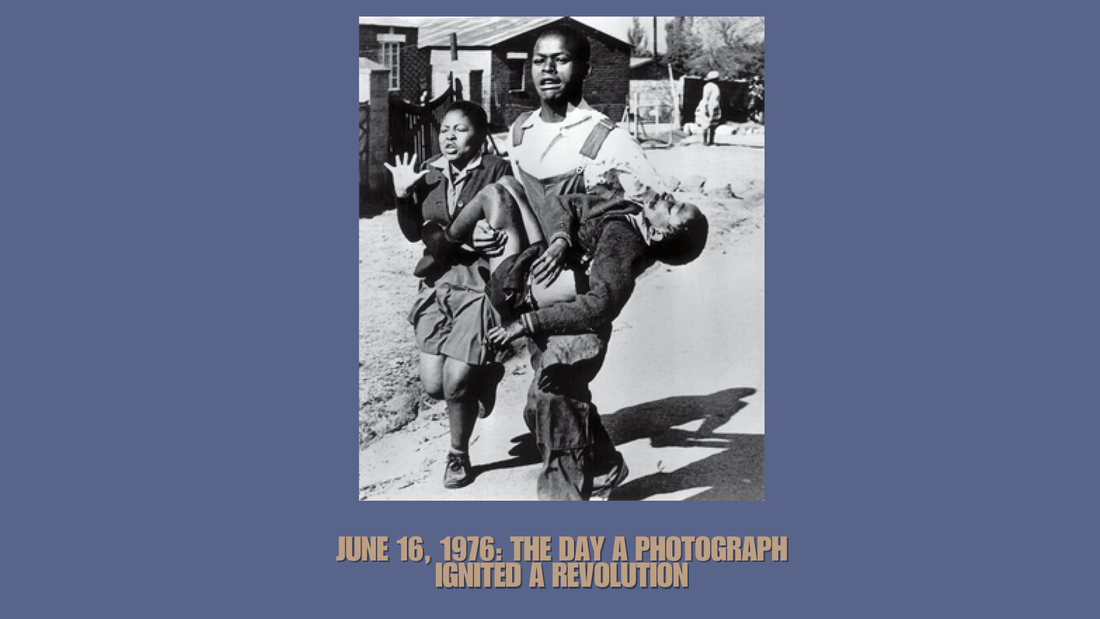
Unflinching Power of Photojournalism in South Africa’s Liberation Struggle
Share
Hector Pieterson and the Unflinching Power of Photojournalism in South Africa’s Liberation Struggle
June 16, 1976, began as a peaceful student protest in Soweto. By afternoon, it became a massacre and by nightfall, a revolution. At the heart of this turning point was a single photograph: the lifeless body of 13-year-old Hector Pieterson, cradled in the arms of a grieving teenager as his sister ran beside them in anguish. This image, captured by photojournalist Sam Nzima, did more than document history it accelerated its course.
System Designed to Erase
Under apartheid, Black South Africans were not just oppressed their histories were systematically erased. The colonial and apartheid regimes controlled the media, censored dissent, and rewrote narratives to justify their brutality. Photographs of police violence were banned. Black journalists faced harassment, imprisonment, or worse.
This is why Sam Nzima’s photograph was so dangerous. It bypassed state propaganda and showed the world what the apartheid government desperately tried to hide: children being shot in the streets for demanding the right to learn in their own language.
The Uprising Through the Lens
Nzima, a self-taught photographer for The World newspaper, knew the risks when he joined the march. Police had barricaded the streets, and students some as young as 10 were singing banned liberation songs. Then the gunfire started.
In the chaos, Nzima saw a boy fall. He didn’t know it was Hector Pieterson until Mbuyisa Makhubu, a high school student, scooped him up, blood dripping from his mouth. Antoinette Sithole, Hector’s sister, ran alongside them, screaming. Nzima raised his Pentax camera and clicked once.
That single frame changed everything.
The Fight to Publish the Truth
Back at The World, editors debated whether to publish the photo. Some feared it would ignite a civil war. But Percy Qoboza, the legendary anti-apartheid editor, insisted: "Come what may, we must use this picture.”
When it ran, the apartheid regime panicked. Police raided the newspaper’s offices. The image was banned in South Africa but it was too late. Wire services had already sent it across the globe.
The Aftermath: Exile, Disappearance, and Legacy
The apartheid state retaliated swiftly:
Sam Nzima was forced into hiding, then exiled to rural Lilydale. Police harassed him for years.
Mbuyisa Makhubu, the boy carrying Hector, fled South Africa. His fate remains unknown one of apartheid’s many unresolved disappearances.
The World newspaper was later shut down, its staff arrested.
Yet the photo lived on. It became a rallying cry, proving that even children were not spared from apartheid’s violence.
Why This Image Still Matters Today
In an era of deepfakes, misinformation, and state-sponsored media manipulation, Nzima’s photograph is a testament to the power of visual truth. It reminds us that:
Journalism is resistance. When history is rewritten, images like these keep memory alive.
The youth are often the first to resist. Hector was 13. Mbuyisa was 18. Their courage echoes in today’s movements for justice.
Freedom was never given it was documented, then fought for. Without this photo, the world might have ignored Soweto.
A Warning for the Present
Today, as South Africa confronts new struggles corruption, inequality, failing institutions we must ask: Who is documenting these stories? In a time when media is under threat globally, Nzima’s legacy reminds us that the camera can still be a weapon against injustice.
Hector Pieterson did not die in vain. His image forced the world to see. And because of that, apartheid could no longer hide.
"When we saw this picture, we said enough is enough." — Nelson Mandela
Reflect. Remember. Resist.